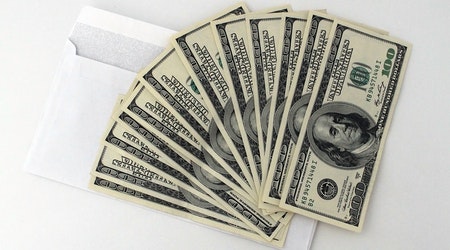Use Incentives to Slash the Cost to Go Green
Energy- and water-efficiency benefits include rebates and tax deductions
By Edward Sullivan, Editor
Bob Holesko has dealt with efficiency projects for two decades. But over the last year, the vice president of facilities for HEI Hotels and Resorts has turned his attention to an often overlooked resource: utility rebates.
Incentives have sweetened returns on Holesko’s lighting retrofits. They enabled him to justify window film installation. And they covered the entire cost of a toilet replacement at a Long Beach, Calif., hotel.
With energy rebate spending topping $1.1 billion for commercial and industrial programs in 2007, it’s no wonder that staying informed about rebates has become a top priority for Holesko. If he doesn’t investigate all the angles, he says, “I feel like I’m leaving money on the table.”
There are many types of incentive programs, says Mark Jewell, president of RealWinWin, a third-party rebate administrator. Some are prescriptive: Install specific products like ballasts or drives and get money back. Other incentives are based on kW or kWh savings achieved. Still others support specific operational strategies, like demand/response and retrocommissioning.
When facility executives are planning an energy or water efficiency upgrade, checking with the utility should be one of the first items on the agenda. Rebate programs have limited amounts of money — and often deadlines. “Miss an application date by a day, and you can miss out on thousands of dollars,” says Holesko.
There are other reasons to start early. Some utilities want to okay projects in advance, says Jewell. “In such cases, you want to make sure you don’t purchase equipment prior to the date the utility approves your application. If the utility requires a pre-construction walk-through, you don’t even want to start demolition before the utility rep sees what you’re replacing.”
Tax Breaks
Rebates aren’t the only financial incentives. States may offer grants or tax incentives. At the federal level, the Energy Policy Act of 2005 (EPAct) provides tax breaks of $1.80 per square foot for buildings that cut energy costs by 50 percent compared to ASHRAE 90.1-2001. Lighting, HVAC and building exteriors can qualify for deductions of 60 cents per square foot.
EPAct standards are demanding but far from impossible to meet, especially for lighting.
More than 30 states have energy codes essentially equivalent to the 2004 edition of ASHRAE 90.1, says Charles Goulding of Energy Tax Savers. That standard limits office spaces to 1 watt per square foot for lighting. Under EPAct, office lighting must use less than .975 watts per square foot. “If they hit code, they’re very close to an EPAct deduction,” says Goulding.
Buildings aiming for LEED certification are also good candidates for EPAct tax breaks. LEED requires energy modeling; so does EPAct for whole-building, HVAC and building envelope deductions. “The key is to pick IRS-approved software to do both,” says Goulding.
In a space that already has efficient lighting, a further upgrade can trigger tax savings. A provision known as “ free riding” permits owners to claim the deduction for an upgrade to a space that met EPAct standards before the upgrade. Installing lighting controls is one way to take advantage of “ free riding.”
Benefits for Public Buildings
Government buildings can also benefit from EPAct. With a public building, tax benefits from an upgrade that meets EPAct standards go to the designer. That’s strong incentive to do the extra work required to hit EPAct targets.
With all incentives, knowledge is power. To find out what rebates are available, Holesko taps energy consultants, vendors, hotel chief engineers and contractors, and utility contacts. He hopes to hire a full-time analyst to look for rebates.
For large, geographically dispersed organizations, outsourcing firms specializing in rebate administration can use their established relationships with incentive program managers to capture the most dollars.
Don’t Exaggerate Potential Savings
While significant savings are possible through energy efficiency upgrades, it is important not to oversell the potential of an energy project. Doing so could sour decision-makers against future projects.
The most important step in delivering accurate savings projections to the executive suite is to only use figures based on measurements. Back-of-the-envelope guesses or projections from anyone but a neutral third party can lead to trouble.
For example, understanding the building’s current energy situation, such as actual burn hours of the lighting system, will help create an accurate baseline against which to calculate savings.
|
Learn to Read the (Green) Tea Leaves
Take advantage of green trends in your company and its industry. Approval for an efficient upgrade may be easier to come by when all signs are starting to point to green.
Be on the lookout for green trends inside the organization — whether from employees or from the top — like recycling programs, ridesharing or green awareness campaigns. Pay attention to industry trends as well. If your company’s competitors are all touting how green they are, your organization might not be far behind. Finally, keep listening for environmental whispers coming from your organization’s clients or customers. An organization may feel compelled to focus on green in order to maintain — or increase — a competitive edge with customers.
|
Related Topics:












